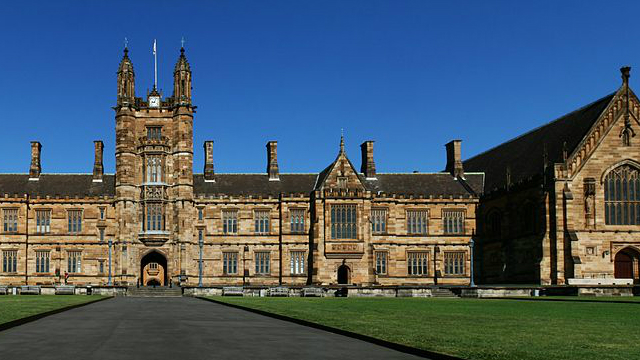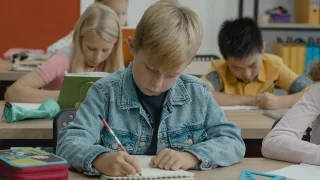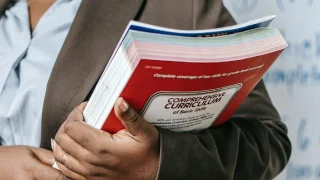
For those of you who attended the AISQ State forum in Queensland in May, much of this presentation will be familiar. When I spoke at that meeting, I said that when I had been asked present some comments on the educational landscape over the next ten years, my first thought had been that no one knew what was going to happen in the next 10 days. At that time, schools were faced with a great deal uncertainty.
Obviously, a lot has happened since then. I don’t need to tell this audience about the current state of play in education policy. What I am going to do instead is talk about some policy themes, both in Australia and overseas. In this vein, I’ll spend the next 30 minutes or so describing some macro-trends rather than specific policies.
It is not confined to policies that are particular to independent schools and they are not necessarily policies or changes I endorse; it is not a wish-list, just some observations and predictions that I expect will provide talking points later.
Role of Government
The federal government is becoming increasing influential in school education to the point where state governments are sidelined in some of the most important aspects of education, even in state schools.
The federal government now controls curriculum and testing, and both sides of politics have stated clear intentions to be more interventionist in teacher education. Federal government is influencing educational priorities and school practice through tied funding. This trend is also occurring in the US, with the Common Core curriculum and a series of tied funding policies such as No Child Left Behind and Race to the Top.
This is not just a feature of the current Labor government. The Howard Coalition government also used the Commonwealth budget to put its stamp on schools. Some examples that come to mind are school chaplains and the flag pole policy. These were relatively small in scale compared with Labor’s National Partnerships, however.
I predict that increased federal involvement will continue into the future. The Australian Education Act legislates strong conditions of accountability to the federal government for the use of Commonwealth funds. Professors Cheryl Saunders and Anne Twomey have stated that the Act represents an unprecedented and significant further centralisation of power.
As this legislation is the result of a bill introduced by Labor, it is difficult to imagine they’ll be in a hurry to change it, especially since Bill Shorten said in his recent National Press Club address that funding without strings was an ‘irresponsible blank cheque’ advocated by ‘faux educationalists in Liberal-land’, but how much this power is eventually exercised is unknowable at this point. The Coalition has pledged to amend the legislation to reduce federal ministerial powers if elected to government but how high a priority this will be for them remains to be seen.
In Australia, the main areas in which state governments retain control are teacher employment and management of financial and capital resources, but even these may not be immune in the long term.
Funding
In May, the issue of funding was still an open question. We now at least know what will happen for the next four years. I am not going to discuss the new federal funding arrangements in any detail, much to your relief I am sure, but I will talk a bit about trends in funding models.
The common feature of the existing SES funding model for non-government schools, the Gonski funding model (plus whatever it is that the Gonski model morphed into), group funding of , and most state education system models, is that they are student-centred. By this I mean that an allocation of money is attached to each child and a school’s funding entitlement is mainly a multiple of that figure. The has a variation on this that gives more weight to teacher allocation.
The proposed by the Victorian state government this year has an added element of student-based funding, introducing a ‘pupil premium’ for disadvantaged students and students with disabilities, which is portable funding they are entitled to in any school.
There will continue to be debates about how much funding each student should receive, but there is a growing acceptance of the notion that education funding should be about the needs of students, not the school they attend.
At some point in the future I hesitantly predict a trend toward sector-neutral funding. I say hesitantly because I am not sure if optimism is impeding my judgement. I am realistic enough not expect this will apply to all existing non-government schools because of the interplay between private and public funding, but I think there is reason to believe that there is scope for a different type of fully-funded non-government school. More on that later.
There is also scope for increasing private funding into the public school sector in particular but also non-government schools. Based on the sorts of funding arrangements that have developed over the last decade, I envisage they will fall into three broad categories — philanthropic, partnerships and profit-making.
Obviously, non-government schools rely heavily on private funding, particularly in the form of tuition fees but also in the form of philanthropic donations. In many schools, private funds are a necessary component of their basic operating costs. In other schools, private funds allow them to provide an exceptional educational experience, both academic and extra-curricular.
The capacity of public schools to increase their revenue through private funding has been more limited and is an area of potential growth. I doubt that we will see compulsory tuition fees in public schools any time soon (although subject fees can be quite high), but philanthropic funding is an underdeveloped area. This cannot be blamed entirely on lack of will to contribute to public education. I have spoken to a number of foundations associated with corporations and private trusts keen to contribute to public schools, particularly those with high levels of disadvantage, but it is not always easy for them to do so, at least not in the ways such organisations prefer to work.
Another avenue for private resourcing of both public and non-government schools is partnerships with community organisations and businesses. This is not always in the form of money, but also capital and human resources. For example, a high school near where I live has a partnership with a construction company in the area. The objective of the partnership is to ensure that high school graduates have the necessary skills to be a source of future employees.
Finally, and more controversially, even though the Education Act expressly precludes government funding to for-profit schools, I think profit-making ventures involving education have an outside chance of appearing in the future. The for-profit sector has been involved in higher and further education and in early education for some years, but Australian schools have so far been quarantined. There are a large number of commercial organisations profiting from school education in the area of teaching resources, information technology, sports and music equipment and many more. But we do not yet have any for-profit schools operating within the mainstream school sector. I am not aware of, but there may be, a couple of for-profit schools not registered to receive government funding and therefore not included in the usual data. Certainly, they do not yet form a visible presence.
Accountability
As I mentioned earlier, increased government funding tends to come with strings. The National Plan for School Improvement is a case in point. In exchange for increased funding, the federal government is seeking to set the agenda for education policy. The NPSI involves the federal government in a wide range of areas, from public school autonomy, arguably a matter for states, to schools’ bullying policies, arguably a matter for schools.
Governments’ approach to governance and accountability tends to resemble the ‘tight-loose-tight’ paradigm from management theory. The inputs to schools — such as curriculum and teacher supply and education — are becoming more tightly-controlled and centralised. The outcomes are also tightly-defined in the form of NAPLAN and onerous levels of reporting to government. In between these things, though, is what schools do. Through the move to decentralisation, there is an attempt to give schools more freedom in how they achieve the outcomes expected of them. This is the ‘loose’ part of the paradigm.
Accountability requirements to governments at both the federal and state level are demanding more and more often that programs and policies be ‘evidence-based’. This has become somewhat of a mantra, and I expect it will persist. On the surface, this is a good thing, however much of the evidence that is cited in support of programs and policies ranges between pseudo-science and complete bunkum. Millions of dollars in public money are spent on program evaluations that are so methodologically weak or flawed, it would arguably be better to have no evaluation at all. This must change, but I don’t expect it to in the near future. I’m happy to talk about this more later if you like.
In terms of public accountability, my prediction is that NAPLAN will continue and expand but My School in its current form is tenuous, I think. NAPLAN will continue because governments like to collect data and will not easily give up the opportunity to collect information about student and school performance. What is in danger is the public availability of NAPLAN results, due to the opposition to My School from some vocal quarters. Governments are not averse to keeping information from the public. The tenor of the public debate, and comments made by leading members of the Coalition lead me to suspect that there may well be a change in the way NAPLAN results are reported in the next decade, and not in the direction of more information.
School governance
Student-centred funding will feed into another trend — decentralisation of school management.
Decentralisation or devolution of governance to the school level in systems of schools has been a distinct development in schools policy in Australia and internationally over the last ten to fifteen years. The breadth and momentum of these reforms around the world led Brian Caldwell to label it a ‘megatrend’.
I will just take a moment to discuss definitions. The terms decentralisation, devolution, school-based management, self-managing schools and school autonomy tend to be used interchangeably but there are some differences. Decentralisation refers to the process of moving decision-making capacity away from central agencies in school systems. This can mean devolution to more local authorities or to schools themselves. School-based management and self-managing schools generally mean the same thing — systemic schools that have a large degree of responsibility and authority over their resources within a centrally-determined framework. This is somewhat different to autonomous schools, where there is almost complete independence in governance.
The only Australian schools to which the autonomous schools definition applies are independent schools, but I do not have to tell this audience how much independent schools too must increasingly dance to governments’ tune.
For public schools and Catholic systemic schools, we are really talking about school-based management.
In Australia, the move toward decentralisation has progressed more quickly in some states than others. Public schools in the Australian Capital Territory have had elements of financial self-management since the 1970s, around the time the Karmel report endorsed the approach. It said that “responsibility will be most effectively discharged where the people entrusted with making the decisions are also the people responsible for carrying them out, with an obligation to justify them, and in a position to profit from their experience”.[1]
The Victorian state government implemented extensive school-based management reforms in the mid-1990s, with public schools gaining control of more than 90% of their budget, as well as the ability to hire their own staff. In 2008, the Western Australian government allowed 100 public schools to become self-managing, with a level of autonomy similar to that in Victoria. There are now 255 independent public schools in Western Australia, which is around one third of public schools in the state. In Queensland, 26 schools became independent public schools this year, and it is anticipated that there will be a total of 120 over the next four years.
Despite what some argue, that there is little research drawing a straight line between school-based management or school autonomy and student outcomes. This is partly the nature of educational research — it is very difficult to prove cause and effect in educational policy for a range of reasons, including the difficulty of isolating the effect of one factor, the absence of control groups and randomisation, and imprecision in the measurement of outcomes. However, analyses of data from international assessments such as PISA and TIMSS have shown mostly positive but some mixed relationships at the country level – nations with more school-based management tend to have better outcomes. One of the most recent studies using TIMSS data found a heterogeneous effect – school autonomy affected student achievement negatively in developing and low-performing countries, but positively in developed and high-performing countries. The same sort of relationship is likely to exist at a school level. Strong schools do even better when given more independence. Struggling schools struggle even more without support. Decentralisation, like funding, provides the opportunity for schools to improve, it does not guarantee it.
Independent public schools have sometimes incorrectly been described as charter schools. They are not, the key difference being that independent public schools are still government-owned and operated; the principal and staff are still government employees and schools must still adhere to state industrial legislation and curriculum and other state and national policies. They are public schools that operate with financial autonomy and greater latitude in staffing decisions.
Charter schools are different beasts. We do not have charter schools in Australia. Not yet, anyway. They are schools that may or may not formerly have been public schools, but which are managed by a private organisation under a legislative contract or ‘charter’ with the government. Charter schools usually cannot charge fees, but they are only ‘public’ schools to the extent specified in the charter, which is negotiated between the charter school management organisation and either the government or a charter authority. Often the charter will stipulate that the school must have open enrolment and must have non-discriminatory hiring policies, but there is generally more variety among charter laws in different US districts and states around other aspects of schooling, including employment practices and curriculum. There are around 1.6 million students in 5000 charter schools in the US, across 40 states, which represents about 5% of all public schools. Sixteen percent of charter schools are run by for-profit organisations.
The ‘’ now operating in England are similar to charter schools. They receive public funding equivalent to similar public schools with the condition that they do not charge tuition fees, and there are some conditions around enrolment and access. However, they do not have to teach the national curriculum, and they have a large degree of flexibility in school staffing. Teachers do not have to be registered, and teacher pay and conditions are set by the school.
Many countries have funding and governance arrangements that allow the establishment of privately-managed, free schools, including Sweden and the Netherlands. New Zealand is also heading down this path at the moment with what they have called Partnership Schools. Partnership Schools are very similar to the UK’s free schools, with similar freedoms in provision, underpinned by rigorous accountability requirements. We have too many chronically poorly performing public schools in Australia. It is only a matter of time before these sorts of developments are debated seriously as a prospect here.
Provision
All of this leads inexorably toward greater diversity in provision. We have seen this take place over the last few decades in the independent school sector with increasing numbers of schools that do not fall into the traditional religious categories.
I have sensed a shift in thinking on non-government schools and the notion of strength through diversity. Even the Gonski report was more positive than I expected, given the committee’s leanings. Their model was not truly sector-blind as they claim – there was a built-in penalty for almost all non-government schools — but it at least acknowledged the entitlement of non-government school students to fair funding.
While I cannot confidently predict the time frame, I think there will be increasing diversity of provision in all school sectors, and the potential emergence of a fourth sector – like charter schools or free schools, established to provide choice for parents who currently have none, or to provide a type of schooling currently unavailable.
For example, like charter schools in the US, some free schools in the UK cater specifically for students who struggle in mainstream schools. They provide an alternative educational experience for students who have behavioural problems, students with long-term health problems, and teenage mothers, for example. Of the 102 free schools approved last year, 12 were alternative provision schools with this sort of objective. Certainly, there are schools within the independent school sector in Australia which serve this purpose but existing funding policies and regulations make it a more difficult prospect.
Greater diversity in schooling will also be driven by the changing nature of students — many of whom must stay at school against their wishes — and the wider variety of options provided by technology. We are witnessing this at the moment in the higher education sector with on-line learning, not just with MOOCs but also within traditional university course provision. It would be surprising if the flipped classroom approach— where students watch lectures independently online and then do what we would think of as homework at school with a teacher’s support — did not begin to trickle down to the secondary sector in the next decade.
Variety in provision in traditional schools will also be driven by some very practical demands created by social change. Many schools now offer after-school care or activities like sports and homework clubs. This is a way of extending the school day without having to negotiate teachers’ working weeks with unions. Longer and more flexible school hours are talking points in many schools for a range of reasons. For some students, it is because of their parents’ working hours. For other students, it is because they need extra learning time. In May, I predicted this would be a trend. Since then, Labor has promised $450 million over four years towards funding after school activities.
Technology
Without doubt, technology is going to change education either by design or by stealth in numerous ways. Arguably, technology is changing the way students use their time and their brains. Schools that do not accommodate this at least to some extent will be fighting a losing battle.
A book called Digital Schools by Darrell West identifies six main ways that technology can be embraced by schools.
- Creating personalised, individualised learning activities, including for students with special needs.
- Games and augmented reality simulations to provide interactive learning experiences.
- Harnessing blogs, wikis and social media for collaborative learning.
- Immediate student assessment and feedback, as well as information collation and analysis of student achievement.
- Teacher, school and system evaluation
- Distance learning and home schooling.
An example of the latter comes from an article by Heather Staker, a mother and innovation researcher whose daughter is home-schooled a few days a week and attends school on the other days. Most of the home-school curriculum is delivered on-line. There are more than 50 virtual charter schools in the US who provide online curriculum. Staker envisages a time when there are ‘micro-schools’, which are cooperatives of families pooling their resources to set up open one-room schools, largely based around on-line learning. It’s easy to see how this approach would appeal to highly-educated parents who want to take a more hands-on role in their children’s education, and not by joining the P&C. The home-schoolers of the future will be very different to the stereotype of today.
Again, I am not making a judgement on technology, online education or home-schooling. There are positives and negatives. While I do think it inevitable that technology will be involved in some significant changes in teaching and learning, I don’t think it will become widespread quickly in schools. Parents are a conservative bunch, on the whole. Just changing the time of the school lunch bell can cause dramas. But, seriously, schooling has changed very little in the last 100 years for good reason — traditional methods work very well for many students. Change will begin on the margins and it will take some time for parents to see any virtue in radical shifts in education.
Curriculum
I’m not going to say very much about curriculum, even though it is obviously of great importance. It is not an area I have spent a lot of time on, as there are others much more knowledgeable about it than me.
All I will say is that curriculum is now caught up in the tight part of the tight-loose-tight paradigm I described earlier. It is becoming more centralised. While ever we have a national curriculum it will continue to be contentious and politicised. Every new education minister, conservative and progressive, will potentially be able to imprint their own values and priorities.
The content of the national curriculum at present has gone largely unscrutinised by the public. It has slipped under the radar while we have all been looking at funding and the Gonski reforms. I see the curriculum as being a flash-point again in the future.
Teaching
The enormous amount of attention paid to teacher quality over at least the last decade has resulted in a number of policy developments I expect will continue over the next decade.
Identifying quality in teaching is a difficult exercise. Witness the very long time taken to develop professional standards that define high quality teaching. Also witness the difficulty in using professional standards to differentiate teachers. The Age newspaper earlier this year reported that 99.8% of Victorian public school teachers had passed the annual performance review and progressed up the pay scale. So the majority of policy debate is now beginning to focus on the quality of teacher candidates before they get into the classroom and the preparation they receive in universities.
Despite dozens of reviews of initial teacher education, all of which concluded pretty much the same thing, change has progressed at a glacial pace. Very few initial teacher education courses look substantially different than they did ten years ago.
As traditional teacher education courses were so intractable, governments have became open to the idea of circumventing them through alternative certification. Even so, programs like Teach for Australia and Teach Next are very small.
Given the relatively unfruitful efforts to improve initial teacher education and to impose discriminating teaching standards for graduates, both federal and state governments are now turning their attention to recruitment and selection. This has been partly influenced by the high performance in PISA of countries whose teachers are drawn from the academic elite. There are moves to limit both entry to and exit from teacher education courses by setting minimum achievement benchmarks. This will have a number of spin-off effects and I think we are only seeing the beginning of this trend.
Finally, there is the issue of performance management. Due to continuing unionisation I do not foresee school systems achieving a great deal of flexibility in setting teacher salaries. Some systems may experiment with forms of bonuses and performance pay but they are likely to be marginal. However, I do think that both governments and unions will be under increasing pressure to deal with under-performing teachers more effectively. Last week, the NSW government has announced its intention to address disciplinary and dismissal procedures in the upcoming negotiations for a new Teaching Award.
It is all very well to encourage schools to become self-managing but it seems unfair to hold them accountable for their results if they cannot rid themselves of unproductive staff.
International assessments as policy drivers
The results of international assessments such as PISA, TIMSS and PIRLS have been impossible to miss. Data from these assessments are analysed to death. Pasi Sahlberg, an education bureaucrat from Finland, has toured the world promoting his book about how Finland became successful in PISA. The highly-influential Grattan Institute report that promotes teacher development as the key to improving student performance rests its case exclusively on data from PISA.
Perhaps the clearest proof of the influence of international assessments on policy in Australia is that becoming one of the top 5 ranking countries in PISA in 2025 is one of the stated Objects of the Australian Education Act 2013.
Data from international assessments are very useful and have fuelled a lot of valuable research, but I am going to break my promise not to opine, and say that I have some concerns about the way data from these assessments are used. The best studies are meta-country analyses. These are the sorts of studies conducted by statisticians and economists at the OECD who use sophisticated techniques to measure statistical relationships between factors.
I can explain this in the context of medical research. Single studies are interesting but not very reliable, however meta-analyses that combine the findings of lots of small studies provide a stronger indication of the true relationship.
Unfortunately, much of the policy debate is based on direct comparisons between countries, which are fraught with error. Inter-country comparisons are informative only to a point. It is very difficult to pinpoint the exact features of a country’s education system that are responsible for its performance. It’s even more contentious to suggest that any other country might adopt them and expect the same results. For more on this, please have a look at my report on PISA published by CIS last year on our website.
Concluding remarks
I have not attempted to cover everything here. What have tried to do is identify some themes among the daily clamour of policy announcements, inquiries and reports. We now have some time to talk about them further. I hope this has been useful start to your conversation.
Thank you.









